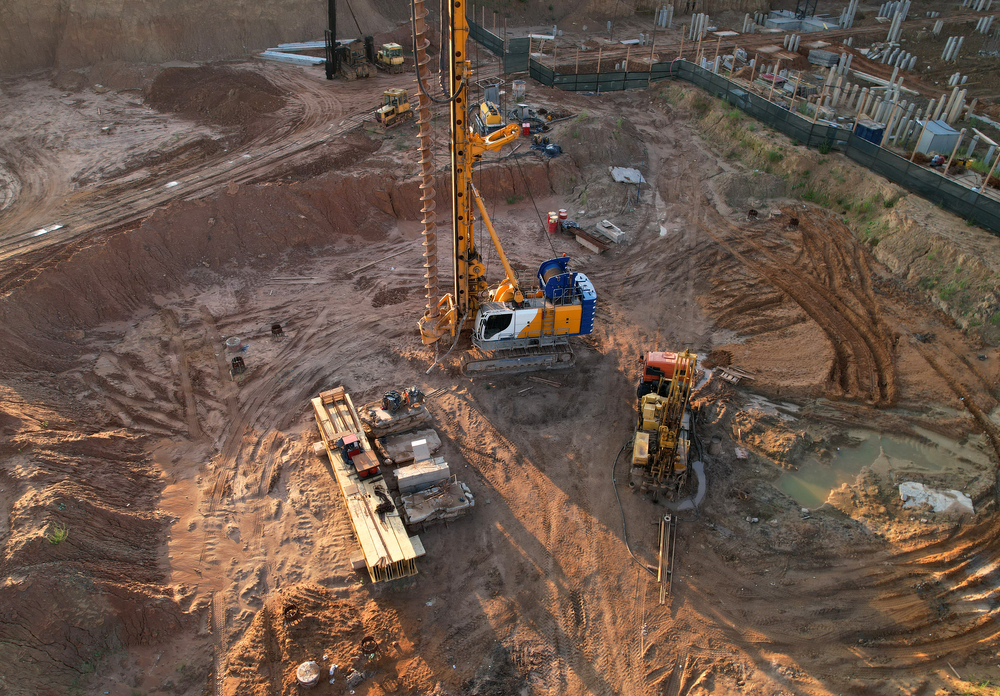Top Guidelines Of Geotheta
Top Guidelines Of Geotheta
Blog Article
What Does Geotheta Do?
Table of ContentsThe Only Guide to GeothetaGeotheta Things To Know Before You BuyThe smart Trick of Geotheta That Nobody is Discussing5 Simple Techniques For GeothetaThe Geotheta Ideas

They carry out site examinations, collect examples, execute laboratory tests, and examine information to evaluate the viability of the ground for building tasks - Geo Tech Engineering. Based on their findings, geotechnical engineers provide recommendations for foundation design, slope security, retaining structures, and reduction of geotechnical risks. They team up with various other specialists, such as architects, structural engineers, and building groups, to ensure that geotechnical considerations are incorporated right into the overall job design and implementation
By examining the habits and residential or commercial properties of soil and rock, they can recognize prospective geotechnical dangers such as landslides, dirt settlement, or incline instability. Their expertise assists stop failures or mishaps that can jeopardize lives and residential property. Below are some detailed responsibilities and duties of a geotechnical designer: Website Examination: Geotechnical engineers conduct website investigations to gather information on subsurface conditions.
They analyze the data to recognize the buildings and actions of the dirt and rock, including their stamina, leaks in the structure, compaction features, and groundwater problems. Geotechnical Analysis and Layout: Geotechnical designers analyze the information gathered throughout website examinations to evaluate the security and suitability of the site for building and construction projects. They carry out geotechnical calculations and modeling to examine aspects such as birthing ability, settlement, slope stability, lateral planet pressures, and groundwater circulation.
Geotheta for Dummies
Foundation Layout: Geotechnical engineers play a critical role in making structures that can securely support the designated framework. They examine the soil conditions and tons demands to identify the appropriate structure kind, such as superficial foundations (e.g., grounds), deep foundations (e.g (https://www.anyflip.com/homepage/zuylo)., piles), or specialized techniques like soil renovation. They think about variables such as settlement restrictions, bearing ability, and soil-structure interaction to create optimal structure designs
They examine building plans, display website activities, and carry out area examinations to confirm that the style recommendations are complied with. If unpredicted geotechnical issues arise, they examine the scenario and provide recommendations for remediation or modifications to the layout. Threat Assessment and Mitigation: Geotechnical engineers examine geotechnical dangers and threats related to the task website, such as landslides, liquefaction, or soil disintegration.

Cooperation and Interaction: Geotechnical engineers work closely with other specialists associated with a project, such as architects, architectural engineers, and building and construction groups. Efficient communication and cooperation are crucial to integrate geotechnical factors to consider into the total project layout and construction process. Geotechnical engineers supply technological competence, answer questions, and make sure that geotechnical requirements are satisfied.
Geotheta Can Be Fun For Everyone
Below are some kinds of geotechnical engineers: Foundation Engineer: Structure designers focus on developing and analyzing structures for structures. They analyze the soil conditions, lots needs, and website characteristics to determine one of the most suitable structure kind and style, such as superficial foundations, deep structures, or specialized techniques like pile structures.
They evaluate the factors affecting incline security, such as soil residential properties, groundwater problems, and incline geometry, and develop methods to protect against slope failures and alleviate threats. Earthquake Designer: Quake designers focus on evaluating and creating structures to stand up to seismic forces. They evaluate the seismic hazard of a site, review soil liquefaction possibility, and establish seismic style requirements to guarantee the safety and security and durability of structures throughout earthquakes.
They do field testing, accumulate samples, and examine the accumulated data to identify the soil homes, geologic formations, and groundwater problems at a site. Geotechnical Instrumentation Designer: Geotechnical instrumentation engineers concentrate on surveillance and measuring the behavior of soil, rock, and structures. They set up and maintain instrumentation systems that monitor variables such as dirt settlement, groundwater levels, incline motions, and structural variations to assess efficiency and give very early cautions of prospective concerns.
9 Easy Facts About Geotheta Explained
They conduct examinations such as triaxial tests, consolidation examinations, direct shear tests, and leaks in the structure tests to gather data for geotechnical evaluation and design. Geosynthetics Engineer: Geosynthetics designers specialize in the design and application of geosynthetic products, such as geotextiles, geogrids, and geomembranes. They use these products to boost dirt security, enhance inclines, give drain services, and control erosion.
They have a tendency to be investigative individuals, which means they're intellectual, reflective, and analytical. They are curious, systematic, sensible, logical, and rational. Some of them are also social, meaning they're kind, generous, participating, patient, caring, practical, compassionate, tactful, and pleasant. Does this noise like you? Take our free profession test to learn if geotechnical engineer is read one of your top career matches.
In the office atmosphere, geotechnical designers utilize specialized software application tools to do calculations, create designs, and evaluate information. They prepare records, review job specifications, interact with clients and employee, and coordinate project activities. The office setting gives a favorable setting for study, analysis, and cooperation with other specialists included in the project.
Some Of Geotheta
They often visit job websites to conduct website investigations, examine geotechnical conditions, and collect information for analysis. These sees involve traveling to various places, in some cases in remote or difficult surfaces. Geotechnical designers might carry out soil tasting, conduct tests, and monitor building and construction activities to make sure that the geotechnical elements of the task are being executed correctly.
Geotechnical designers also work in specialized geotechnical laboratories. Geotechnical laboratory engineers work extensively in these settings, dealing with testing devices, running tools, and tape-recording information.
Report this page